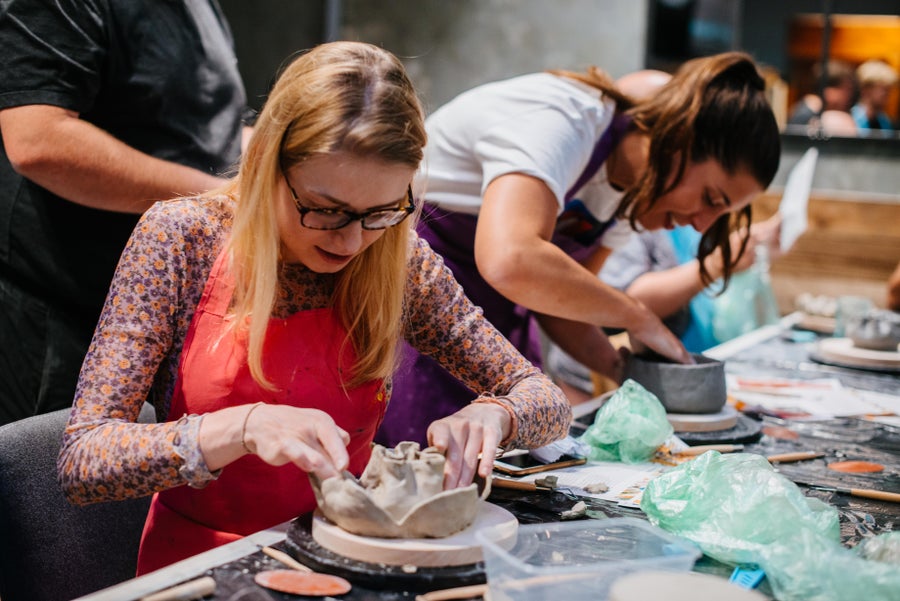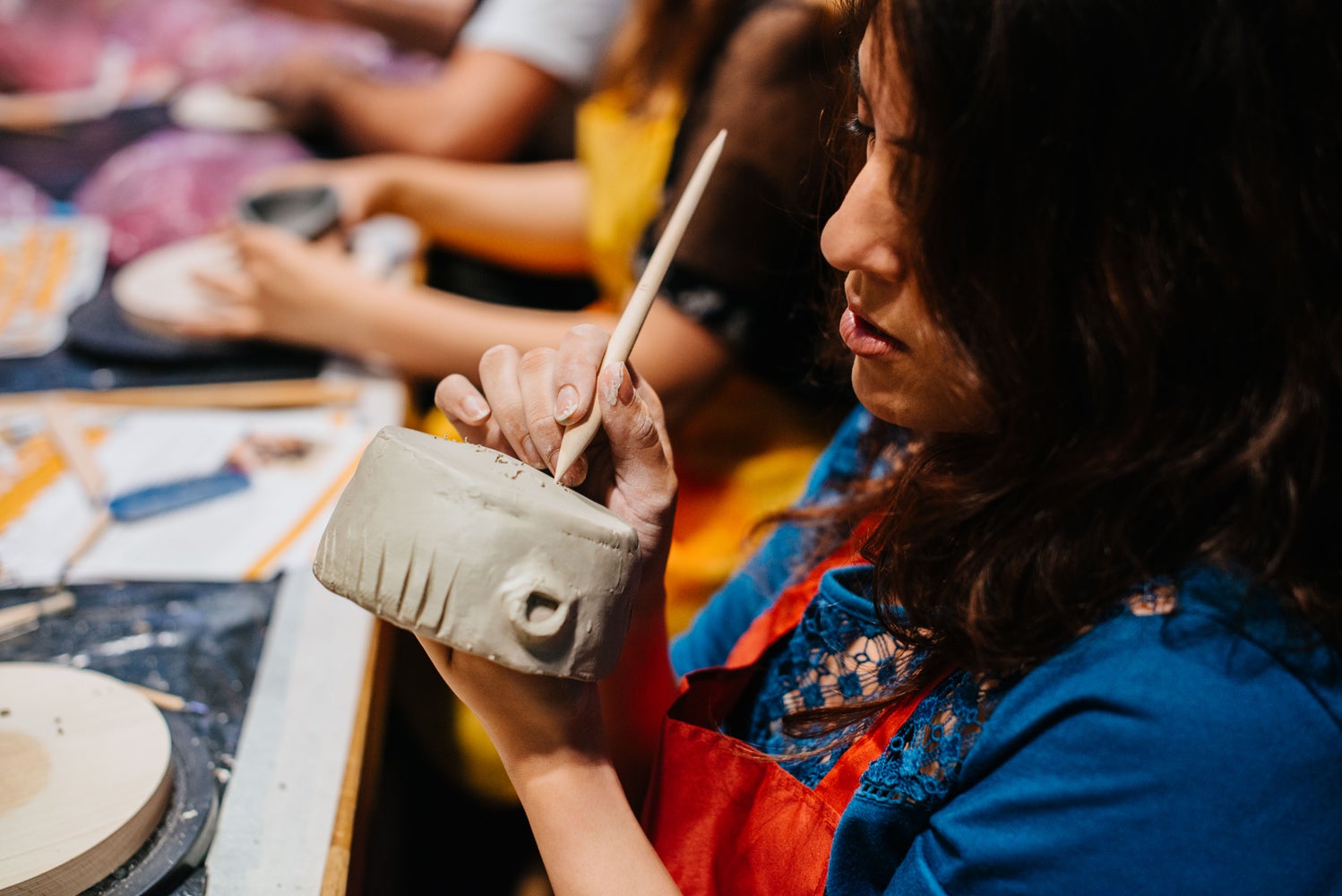If you’re thinking about a better work life balance, ceramics might not be top of your to-do list. But stick with us, because making art has long been proven to boost your wellbeing and encourage mindfulness. Lucky for us, Hackney Arts popped in to host a beginners’ ‘Make a Mug’ workshop so we could test it for ourselves. Here we chat with Trine Lyngsholm about why working with materials is as good as therapy.
Firstly, is ceramics as tricky as most people expect?
The saying that it takes 10 000 hours to be an expert within a field is as true for working with clay as it is for any field of expertise. Clay is a living material that the maker is trying to control. It has its own life to some extent. It shrinks – both while drying and during the firing – and “remembers” the gestures of the hand during the firing. As a beginner, you can embrace the uncertainty of the material.
How do you think making art can help one’s wellbeing?
“Being in the moment” is the first thing that comes to mind. When working with materials your fingers are occupied, your mind wanders, but not too far, because you have to concentrate on what you’re doing. You can almost reach a state of meditation. I think making and experiencing art can help people get in touch with their emotions – and really help relieve stress.

How are your zen levels seeing as you work with your hands, away from screens all day?
I wish it was so! As an artist, I spend about 60% of my time in front of a screen, writing applications for funding, juried exhibitions and artist statements for upcoming exhibitions. But it’s all worth it. When I do get time to do art, I experience an energy which is very similar to the energy gained from meditation. So I guess my zen levels vary, as with any other person.
What are your tips for making ceramics a regular hobby?
Seek out places that offer ceramics classes in London, like The Kiln Rooms or Kana London. Be persistent even when you get disappointing results out of the kiln. Sometimes those disappointments lead to new and more interesting pieces. I call them “happy mistakes” and often those mistakes turn out to be new opportunities.
When working with materials your fingers are occupied, your mind wanders, but not too far, because you have to concentrate on what you’re doing. You can almost reach a state of meditation. I think making and experiencing art can help people get in touch with their emotions – and really help relieve stress.
What can people expect from your ceramics session?
We focus on the Japanese tradition of wabi-sabi clay techniques. I give an introductory insight into clay as a material and the process that leads up to the firing of a finished piece. We then focus on the process of making, the desire to experiment and test the materials, lead by you and your vision for your Japanese wabi-sabi cup. Hopefully this will inspire you to immerse yourself in the art of clay in the future.

